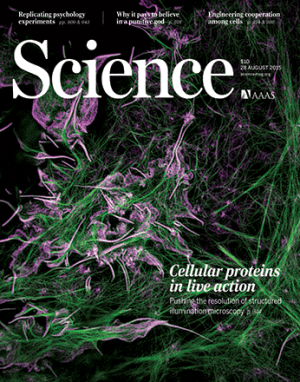The U.S. Department of Energy sponsored a 2013 workshop in Berkley, California, that brought together 15 of the nation’s top crystallization researchers to discuss the rapidly emerging but still obscure area of nonclassical crystallization.
Jeffrey Rimer, Ernest J. and Barbara M. Henley associate professor of chemical and biomolecular engineering at UH Cullen College of Engineering, was among members of the group who gathered to compose a review article that was published in Science last month.
“Science is a high-profile interdisciplinary journal that reaches a wide audience and covers a broad range of applications,” Rimer said. “Examples of nonclassical crystallization are mounting in the literature, and this review article presents the most comprehensive overview of what is currently known about this topic.”
The workshop afforded experts from various fields, including geoscience, materials science, chemistry and chemical engineering, an opportunity to meld their ideas to create a more cohesive framework for exploring nonclassical crystal growth. They established nomenclature and methodologies for reference among researchers working on papers for future publication, and they defined the term crystallization by particle attachment, or CPA, to encompass all pathways of crystal growth not characterized by classical monomer-by-monomer incorporation of atoms, molecules or ions.
“I was asked to join the group because of my work with zeolites, which are one of the first materials identified to grow by these routes,” Rimer said. “Our review summarizes what we know about various natural, biological and synthetic crystals that grow by CPA, and it highlights open questions and challenges we face with respect to characterizing their pathways of formation.”
Researchers have studied mechanisms of classical crystallization for centuries, but evidence of nonclassical crystallization pathways emerged only a couple of decades ago. In the mid-1990s, researchers discovered crystallization by addition of a wide range of particles, including multi-ion complexes, oligomeric clusters, crystalline or amorphous nanoparticles and monomer-rich liquid droplets.
They postulated that the presence of these particles contributed to growth of the rough-surfaced, spheroidal crystals they observed, which were unlike their classical counterparts. Layered monomer-by-monomer pathways of classical crystallization were known to produce well-defined faceted crystals with smooth surfaces.
Rimer was the first to provide in situ evidence of zeolite growth by CPA in a paper that was published in Science earlier this year. Using atomic force microscopy, AFM, he definitively determined that the zeolite silicalite-1 grows by concerted processes of nonclassical particle attachment and classical monomer-by-monomer addition. Advanced in situ capabilities of AFM and electron microscopy have allowed researchers to visualize unknown and unpredictable nonclassical growth processes in real time. Prior to these advancements in technology and instrumentation, scientists relied on microscopy images taken after crystal growth had already occurred to infer mechanisms of formation.
One of the key takeaways from the workshop was that many crystals display evidence of both nonclassical and classical growth, so crystallization does not necessarily follow a single pathway. Many of the unanswered questions about nonclassical crystallization relate to dynamic intermolecular interactions that exceed the scope of classical theories. In their studies, researchers must account for multiple factors including roles of solvents, roles of ions in solutions and orientations of particles as they sample crystal surfaces.
“Right now, there are more question marks than periods in terms of understanding these pathways of growth, but there is a relatively small but growing list of materials that have been identified, or are at least believed, to grow by these routes.” Rimer said. “We can subdivide this list into those materials we postulate grow by CPA processes based on inferences from ex situ experiments, and those we can directly visualize growing by these routes.”
Understanding mechanisms of nonclassical crystallization would provide researchers with a platform for rational design of crystals at molecular levels for biological and industrial applications. The Rimer Group has already used knowledge of CPA mechanisms to engineer zeolites as catalysts for products ranging from gasoline to commodity chemicals.
As an established leader in zeolite research, Rimer’s work was familiar to many of his workshop collaborators who attended prior conferences where he delivered presentations. Professor Patricia Dove of Virginia Tech and James De Yoreo of Pacific Northwest National Laboratory, prominent names in crystallization research, selected the group of researchers and composed much of the paper that summarized their discussions. Professor Pupa Gilbert of the University of Wisconsin-Madison and Professor Lee Penn of the University of Minnesota were also instrumental in coordinating the workshop.
Aside from nonclassical zeolite crystallization, Rimer studies many types of biogenic crystals that grow classically. With knowledge of classical mechanisms of crystal growth, he has designed drugs for kidney stone disease and determined ways antimalarial drugs operate in cases of malaria.
“Fundamental theories of nonclassical crystallization have yet to be established,” Rimer said. “As the list of materials exhibiting CPA mechanisms continues to increase in conjunction with technological advancements to capture the dynamics and molecular-level details of their growth, we will undoubtedly gain a much better understanding of the interactions and processes governing these pathways.”
